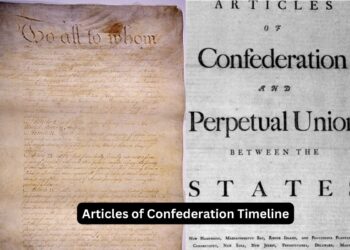“The Death of the Moth” is an essay written by Virginia Woolf that was first published in 1942, shortly after her death. In this essay, Woolf reflects upon the nature of life and death through the observation of a moth’s struggle against death.
In her essay “The Death of the Moth,” Virginia Woolf observes a seemingly insignificant event—a moth’s struggle to survive and its eventual demise. She uses this natural occurrence as a metaphor to contemplate the broader themes of life, death, and the human experience.
Woolf begins by describing a common, ordinary moth as it attempts to fly through the windowpane in her room. Despite its efforts, the moth repeatedly fails to escape and instead becomes fixated on the outside world. Woolf becomes engrossed in the moth’s struggle and finds herself drawn to its determination to survive, despite the inevitable outcome.
She parallels the moth’s struggle to the human condition, acknowledging the fragility and vulnerability of life. The moth’s limited lifespan and futile attempts to overcome the barrier of the window reflect the ephemeral nature of human existence and the struggles individuals face throughout their lives. The Death of a Moth Essay Summary By Virginia Woolf
As the essay progresses, Woolf delves into a contemplation of the inherent differences between life and death. She muses on the beauty of life and its delicate balance, which can be disrupted at any moment. The moth’s struggle against death becomes a symbol of the human will to survive, even when faced with insurmountable challenges.
Woolf’s prose becomes more introspective as she discusses the interconnectedness of life and death. She reflects on how death is always present in the background, casting a shadow over life’s endeavors. The ephemeral nature of existence reminds her of the importance of appreciating the present moment and finding beauty in the ordinary aspects of life.
In the final moments of the essay, Woolf witnesses the moth’s ultimate defeat. As the insect succumbs to death, she notes the sudden transformation from a living creature with a purpose to a mere lifeless object. This serves as a stark reminder of life’s impermanence and the inevitability of mortality.
The Death of a Moth Essay Summary By Virginia Woolf-The essay begins with Woolf sitting in her room, observing a moth flying about the windowpane. She describes the moth’s movements, its delicate and desperate struggle to escape through the window and reach the outside world. Woolf sees the moth as a metaphor for life and its struggle against death.
The Death of a Moth Essay Summary By Virginia Woolf-As Woolf watches the moth, she realizes that it is doomed to fail in its attempts to escape. The moth becomes tired and weak, its movements slow down, and eventually, it falls to the ground. Woolf describes the moth’s death as a sudden cessation of movement, a stillness that signifies the end of life.
Also Read-
- A Room of One’s Own Essays Summary By Virginia Woolf
- Self-Reliance Essays Summary By Ralph Waldo Emerson
- On the Pleasure of Hating Essays Summary By William Hazlitt
- A Supposedly Fun Thing I’ll Never Do Again Essays Summary By David Foster Wallace
The Death of a Moth Essay Summary By Virginia Woolf-Through the observation of the moth’s death, Woolf contemplates the fragility of life and the inevitability of death. She reflects on the transient nature of existence and how even the most insignificant creatures, like the moth, can inspire a profound understanding of life’s fleetingness.
Woolf also explores the contrast between the moth’s struggle for life and the indifference of the human world. While the moth fights desperately for its survival, humans often take life for granted and fail to appreciate its preciousness. Woolf notes the paradoxical beauty in the moth’s struggle, as it embodies the essence of life’s resilience and determination.
The Death of a Moth Essay Summary By Virginia Woolf-“The Death of the Moth” is a poignant essay that invites readers to contemplate the meaning of life and the inevitability of death. Woolf’s vivid description of the moth’s struggle and eventual demise serves as a reminder of life’s fragility and the need to cherish and appreciate every moment.
Virginia Woolf (1882-1941) was a highly influential British writer and one of the foremost figures of modernist literature. She is celebrated for her innovative narrative techniques, introspective explorations of consciousness, and her feminist perspectives. Woolf was born in London, England, on January 25, 1882, into an affluent and intellectual family. She was the daughter of Sir Leslie Stephen, a notable critic and historian, and Julia Prinsep Duckworth Stephen, a renowned pre-Raphaelite model and philanthropist.
The Death of a Moth Essay Summary By Virginia Woolf-As a child, Woolf was surrounded by a stimulating literary environment. Her parents’ house, known as the Stephen household, was frequented by leading intellectuals and artists of the time, such as George Henry Lewes and Julia Margaret Cameron. This upbringing greatly influenced Woolf’s intellectual curiosity and nurtured her love for literature.
However, Woolf’s childhood was marked by several tragic events. Her mother died when she was only 13 years old, and this loss deeply affected her emotional well-being. Additionally, Woolf experienced the death of her half-sister, Stella Duckworth, which further contributed to her bouts of depression and mental instability later in life.
The Death of a Moth Essay Summary By Virginia Woolf-Despite these challenges, Woolf’s passion for writing began to blossom during her teenage years. She, along with her sister Vanessa, started a literary magazine called “Hyde Park Gate News,” which showcased their early literary efforts. This creative outlet allowed Woolf to experiment with writing and develop her distinctive voice.
In her early adulthood, Woolf and her sister became central figures in the Bloomsbury Group, an influential collective of writers, artists, and intellectuals. This group included notable individuals such as E.M. Forster, Lytton Strachey, and John Maynard Keynes. The Bloomsbury Group rejected Victorian conventions and embraced a more modern and unconventional approach to art, literature, and relationships. It was within this intellectual circle that Woolf found inspiration, engaged in stimulating discussions, and forged lifelong friendships.
The Death of a Moth Essay Summary By Virginia Woolf-Woolf’s literary career truly took off in the early 20th century. Her first novel, “The Voyage Out,” was published in 1915. This was followed by works such as “Night and Day” (1919) and “Jacob’s Room” (1922). However, it was her novel “Mrs. Dalloway” (1925) that established her as a significant literary voice. “Mrs. Dalloway” employs Woolf’s characteristic stream-of-consciousness technique, delving into the inner thoughts and experiences of the characters as they navigate a single day in London. The novel received critical acclaim for its innovative style and exploration of human consciousness.
Woolf continued to experiment with narrative techniques in subsequent works such as “To the Lighthouse” (1927) and “Orlando” (1928). “To the Lighthouse” is a meditative and introspective novel that explores the complexities of relationships and the passage of time. “Orlando” is a highly imaginative work that defies traditional notions of gender and identity, following the journey of a protagonist who experiences both male and female lives across centuries.
The Death of a Moth Essay Summary By Virginia Woolf-In addition to her novels, Woolf also made significant contributions to the literary world through her essays and non-fiction works. “A Room of One’s Own” (1929) is one of her most renowned works of non-fiction. In this essay, Woolf examines the societal constraints faced by women in the pursuit of literature and argues for the necessity of financial independence and a dedicated physical space for women to create and thrive.
Woolf’s writing is characterized by its lyrical and experimental prose, which often captures the subtle nuances of human emotions and experiences. Her stream-of-consciousness narrative style allows readers to delve deep into the thoughts.
The Death of the Moth Themes
- Transience and Mortality: The central theme of the essay revolves around the transient nature of life and the inevitability of death. Woolf uses the short and fragile life of the moth as a metaphor for human existence, emphasizing the fleetingness of life and the constant presence of death. The moth’s struggle against the inevitability of its demise serves as a reminder of the fragility of life and the impermanence of all living beings.
- The Beauty in Ordinary Life: Woolf finds beauty and significance in the mundane and ordinary aspects of life. The essay’s focus on a seemingly insignificant event—the life and death of a moth—highlights Woolf’s ability to see meaning in the everyday occurrences that often go unnoticed. Through her observations, she encourages readers to appreciate the simplicity and beauty in the world around them.
- Human Empathy and Connection: Woolf demonstrates a deep sense of empathy and connection with the moth’s struggle. She relates to the moth’s futile attempts to survive, recognizing the universal desire to cling to life. This theme underscores the interconnectedness of all living beings and the shared experiences of mortality and vulnerability.
- The Inevitability of Death: Throughout the essay, Woolf contemplates the omnipresence of death and its power over life. The moth’s eventual death symbolizes the ultimate fate that awaits all living beings. Woolf’s portrayal of death as an ever-present force emphasizes the significance of cherishing life’s moments and finding meaning within the finite time we have.
- The Unseen and Unnoticed: Woolf highlights the importance of paying attention to the unnoticed and overlooked elements of life. The moth’s struggles against the windowpane often go unnoticed by people, representing the many unobserved struggles and experiences that occur daily. The essay serves as a call to be more mindful and attentive to the subtleties of life that surround us.
- Acceptance and Resignation: As the moth eventually accepts its fate and ceases to struggle, Woolf contemplates the themes of acceptance and resignation in the face of mortality. The moth’s resignation reflects a sense of surrender to the natural order of life and death, prompting reflections on the human response to the inevitability of our own mortality.
Conclusion
The Death of the Moth” is a thought-provoking essay that explores the themes of life, death, and the fleeting nature of existence. Virginia Woolf’s observation of a moth’s struggle against death serves as a metaphor for the human condition and prompts readers to reflect on the significance of life’s transience.
The Death of a Moth Essay Summary By Virginia Woolf-Through her eloquent prose, Woolf emphasizes the fragility of life and the inevitability of death. She highlights the beauty and resilience in the moth’s struggle, contrasting it with the indifference and often taken-for-granted nature of human existence.
“The Death of the Moth” invites readers to pause and appreciate the preciousness of life, urging them to embrace every moment and find meaning in the face of mortality. It serves as a poignant reminder that life is ephemeral, and it is our ability to confront and appreciate this fleetingness that gives it profound significance.
The Death of a Moth Essay Summary By Virginia Woolf-Ultimately, Woolf’s essay encourages readers to contemplate their own mortality and the impermanence of all living things. It invites us to reflect on the importance of embracing life, finding beauty in its struggle, and cherishing the moments we have before we, too, succumb to the inevitable stillness of death.
FAQ.
Q. Who is the author of “The Death of the Moth”?
Ans. The author of “The Death of the Moth” is Virginia Woolf, a renowned British writer and one of the most influential figures in modernist literature.
Q. When was “The Death of the Moth” published?
Ans. The essay was first published in 1942, shortly after Virginia Woolf’s death. It appeared in a collection of her posthumously published works titled “The Death of the Moth and Other Essays.”
Q. What is the main theme of “The Death of the Moth”?
Ans. The main themes of the essay revolve around the fragility of life, the inevitability of death, and the transient nature of existence. Woolf uses the metaphor of a moth’s struggle against death to contemplate these themes.
Q. What is the significance of the moth in the essay?
Ans. The moth represents life’s struggle against death. Woolf observes the moth’s desperate attempts to escape and reflects on the beauty and resilience found in its struggle, highlighting the contrast between the moth’s determination and the indifference of the human world.
Q. What does “The Death of the Moth” teach us?
Ans. The essay prompts readers to contemplate the fleetingness of life and the need to appreciate and cherish every moment. It encourages us to reflect on our mortality, find meaning in the face of death, and value the preciousness of life.

















